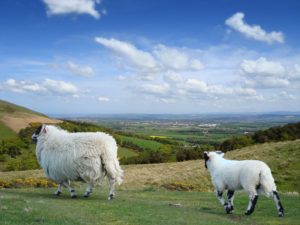Giving Grass A Rest
2 August 2018 Winter grazing management influences the quality and quantity of grass in the spring. The difference was quantified in the 1970’s in John Frame’s research; sheep grazing in a set stocked system from October to December reduced April yield by 31% and sheep grazing from January to March reduced yield by 40%.
Winter grazing management influences the quality and quantity of grass in the spring. The difference was quantified in the 1970’s in John Frame’s research; sheep grazing in a set stocked system from October to December reduced April yield by 31% and sheep grazing from January to March reduced yield by 40%.
Farms that winter all stock inside will see this; the grass, following a break, gets going quicker in the spring as it has the leaf area to capture sunlight. Clearly, this is expensive, so what are the other options?
Forage crops such as fodder beet and swedes are high yielding and can withstand higher stocking densities than grass. Therefore, the stock can be moved off the best pastures to provide a rest. However, this year has not seen great results for establishing these crops.
All Grass Wintering is a rotational grazing method for the pregnant ewe flock. From three weeks after tupping until three weeks pre-lambing, the ewes are moved through a series of paddocks over three months. By grazing the best lambing or turnout fields early in the rotation, these areas get a rest and will get going better in the spring. More information can be found here: https://beefandlamb.ahdb.org.uk/wp-content/uploads/2016/03/BRP-plus-All-grass-wintering-of-sheep-080316.pdf. Aspects of this can be applied without the rotational grazing system – simply graze the best fields early on but make sure they are rested ready for spring.
Off Farm Wintering, this comes at a cost but if it means there is more grass for the ewes and lambs to go onto, the lambs will get a better start and should wean heavier.
For farms with hill or rough ground, it could be as simple as moving the stock onto this ground and feeding hay or silage if required.
We can wish for a kinder spring next year, but winter grazing management will influence grass growth too and it is something we can control.
Poppy Frater
Sign up to the FAS newsletter
Receive updates on news, events and publications from Scotland’s Farm Advisory Service
